![]()
2011 SYRIA - JORDAN TOUR
April 21, 2011 Thursday
Day 09 Mount Nebo, Karak, Petra
Submitted by Carole , and Meli Seval
Click here for Day 10
Petra
Table of Content Syria tour Itinerary
Home page
Syria 2011 group journal
Amman looks like any
modern city. From my window I could see the white painted apartment
buildings, the glittering light of a mall, and busy highway. The only
thing that had confirmed the fact that Amman , like Aleppo, like Damascus,
has been and still is a very important stop on the way to the Moslem Holy
Land , Hicaz was the Indian Moslem pilgrims at the hotel. The woman
were wearing very colorful, embroidered, bejeweled out fits covering
themselves from head to toe. The men were in ironed, starched, white long
dresses. Our day was going to take us to another Holy Land, to
the land where Moses had a joy of seeing the Dead Sea and the River
Jordan
We left Amman a huge busy city early. The buildings are largely
built of lime stone and somewhat austere closed in feel.
As we approached the Mountain of Nebo, the road was winding up the hills
giving no warning that in few minutes we would be looking at the lowest
point of our planet. Honoring the sacredness of the location, in the
6th Century the Byzantines had built a church on the hill top.
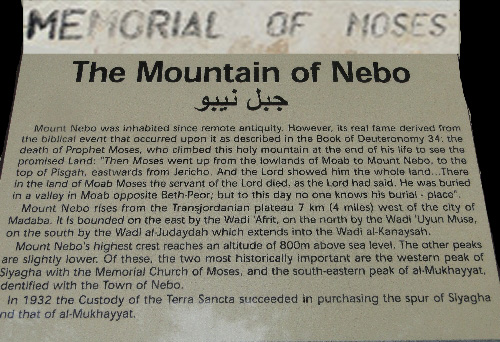
According to legend
Moses first saw the Promised land after wandering through the desert for
40 years. One might wonder why it took so long to get from Egypt to Jordan
Valley especially Moses himself never made to Jerusalem.
From the edge of the church wall one could stand where Moses had stood up
leaning on his scepter,
and one could see what Moses saw , the Holy Land of the Christians and the
Jews.

In the distance lies the Jordan
River and the Dead Sea
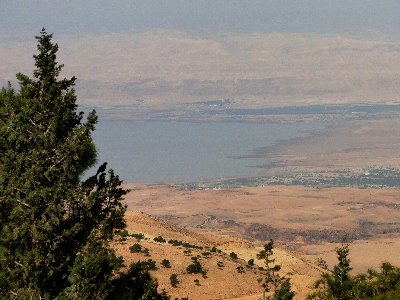
The Dead Sea
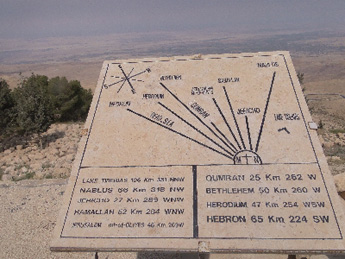
The distance to the Biblical sites.
No place is too far from here!!
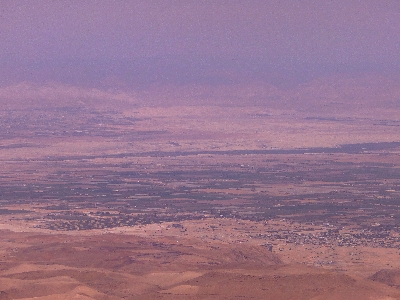
The Jordan River where Jesus was Baptized
Our next stop was Madaba ( Midaba). It seemed like the Jordanians were very well organized with Tourism Police. Our guide had to first inform our arrival to the police. A short walk to the church. We were first invited to the visitor's center to have an explanation on the floor mosaic of the church which had a replica on the wall here. The remains of a complex mosaic map of the Jordan Valley area was uncovered when preparation for a house construction was underway. The mosaic was the ethnographic, topographic and the Biblical map of the Holy Land. the walled city of Jerusalem, the place where Jesus was baptized and the segments from life style of the people were depicted very clearly.
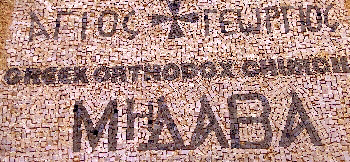
Midaba Greek Orthodox Church
stands as a witness to the Byzantine authority here
since the 6th Century.
The great mosaic on the floor of the church describes the life in the Holy Land and the paintings are excellent examples of the 6th century Christian art.
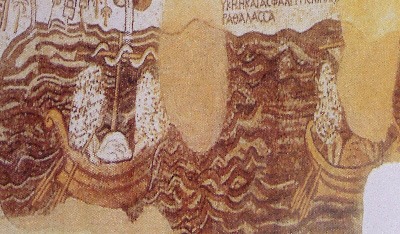
Two boats in the river Jordan. one is loaded with salt
represented with a white bundle and the other boat is caring a cargo of wheat.

Jerusalem
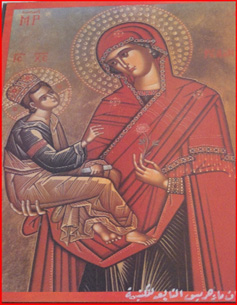
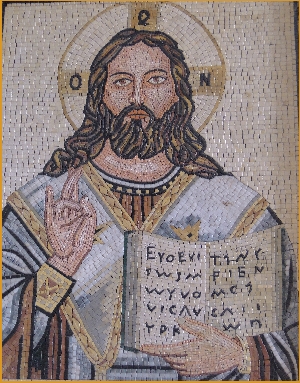
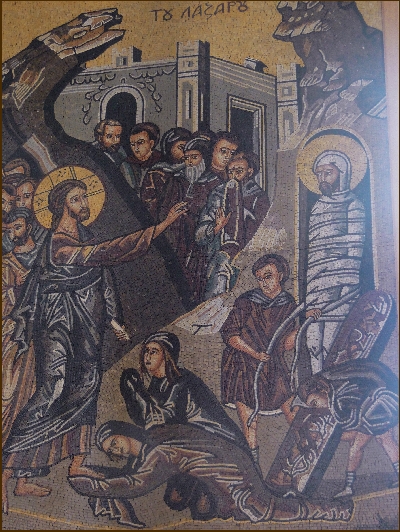
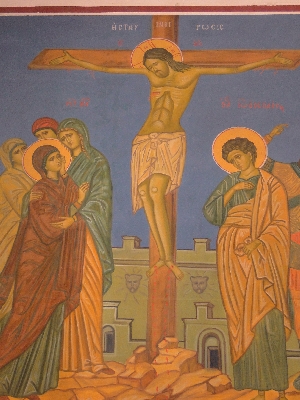
The Byzantine interpretation of the life of Jesus on the wall paintings in the church.
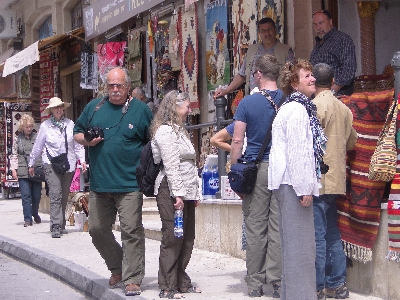
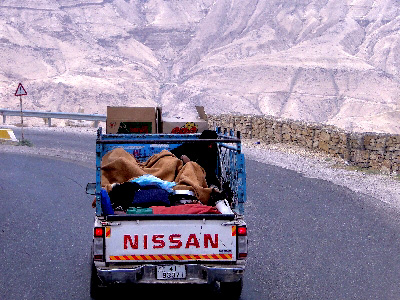
Looking for coffee again! The bedewins, in their trucks, we,
in our bus, hit the road again.
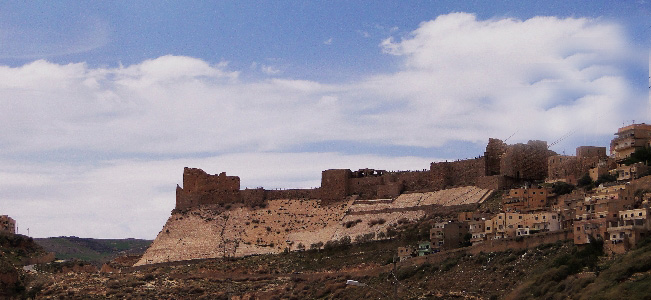
After a tasty lunch stop, we continued on to Kerak
Yesterday the group voted to take a 2-hour detour to go to the citadel of Kerak which was the longest occupied Crusader's castle. Michael had already told us the history of Arnold After being rescued from a 15-year imprisonment, Arnold continued fighting with the Arabs. But Selahaddin Eyyubi finally took his head and his castle and put an end to the worst of the Crusade invasion in the Middle East. Getting to Kerak was a hustle. We had a huge bus and the double parked cars did not leave a road for us to move. Angry police man and the locals helping the police finally opened the way for us and we reached the Kerak Citadel. On arrival Michael was heard to say:"a long bus ride abrades one's will to live" amen to that!
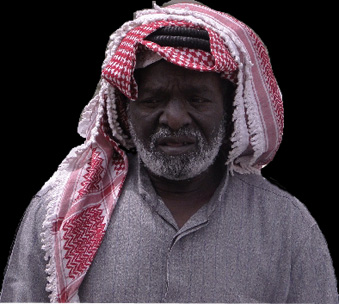
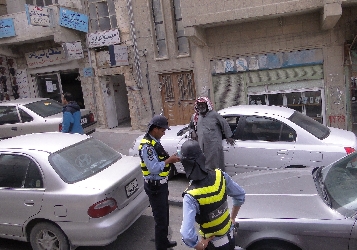
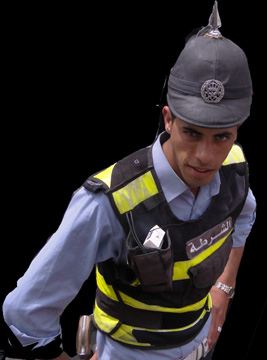
![]()

Dominating the region, the citadel looked
like a huge eagle's nest.
One could clearly sea see that not one caravan could pass by this fortress
with out paying their proper dues .

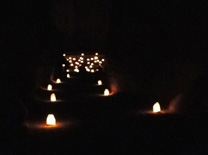
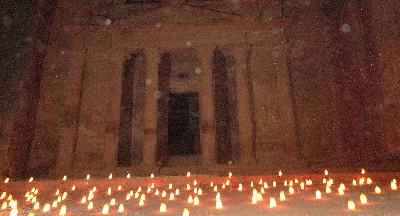
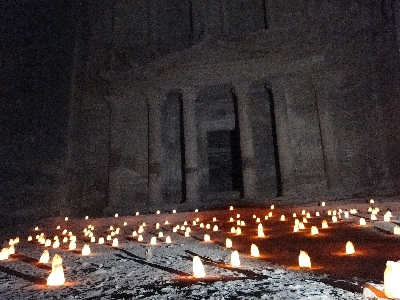
Our evening
entertainment was the sound and light show at Petra. The long Journey on
foot through the trail illuminated only by candlelight is very special.
The sound and light show was for me an anticlimax; less magical than it
could have been mostly because the show'- flute music and a song
accompanied by an ancient Bedouin stringed instrument - rebab - was
followed by a recitation that lacked passion. never the less Mary Kay and
Michael were so "affected" that they were the last to leave.
Tomorrow a full day to explore the Petra site and learn more
about the complex and the sophisticated peoples who populated this
area.
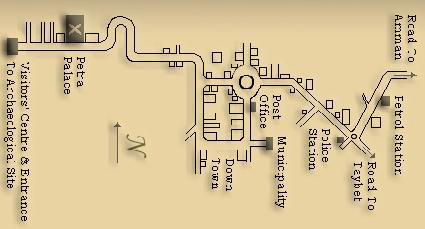
We stayed overnight at Petra Palace just
a walk away from the entrance of Petra.
The rooms on the 3rd floor looking at the pool were wonderful.
http://www.petrapalace.com.jo/
Click here for Day 10
Petra
Table of Content Syria tour Itinerary
Home page
Syria 2011 group journal